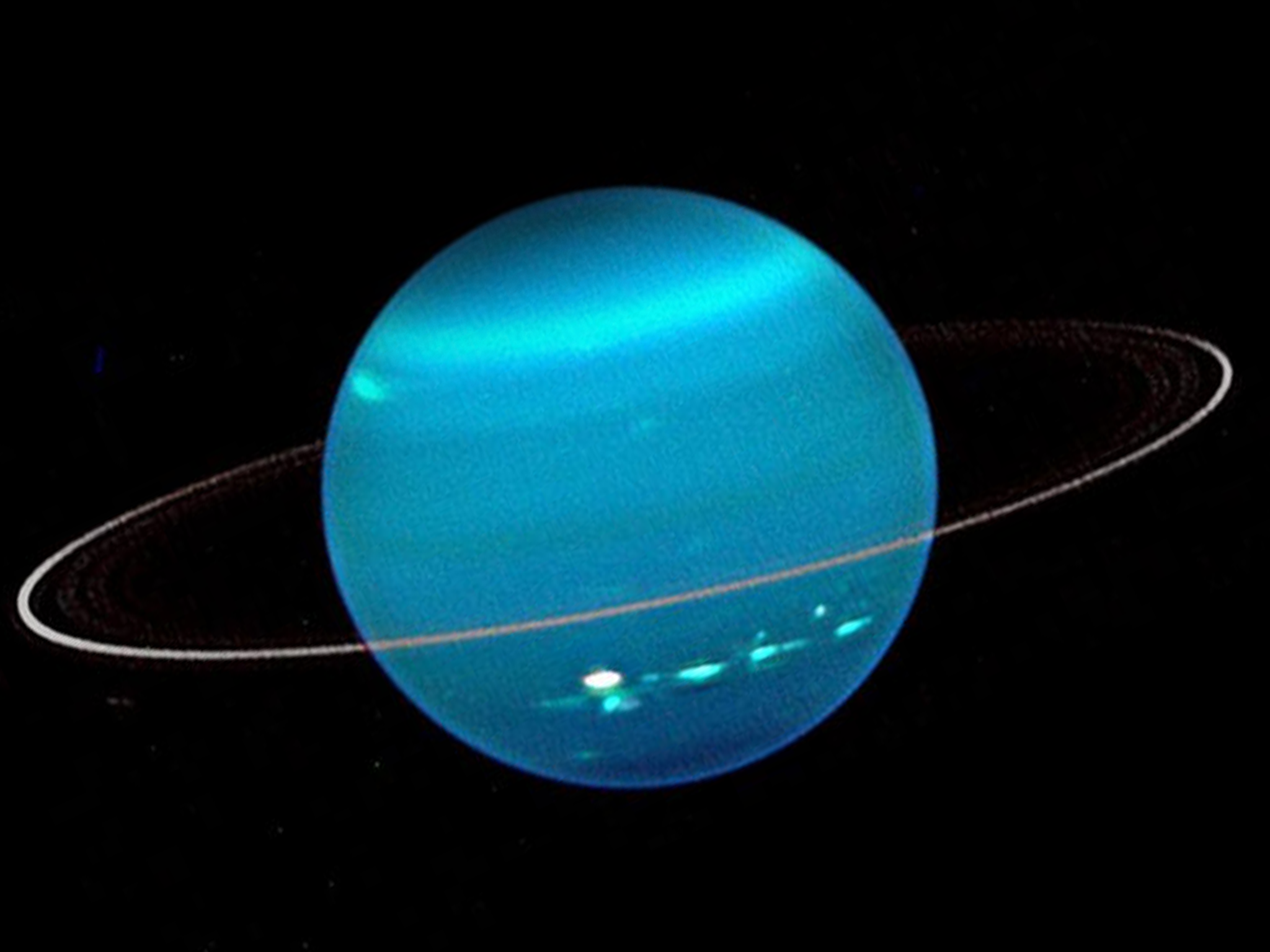Scientists discover X-rays coming from Uranus
The finding could give scientists a better understanding of the icy giant

Astronomers have detected X-rays from Uranus for the first time, in findings that could help them learn more about the seventh planet from the sun.
In a study published by the Journal of Geophysical Research on Wednesday, scientists from the UK, France, America and China said they had detected X-rays emitted by the planet thanks to visuals taken by NASA’s Chandra X-ray Observatory, a space telescope.
They studied observations taken in 2002 and 2017 by the Chandra observatory, detecting X-rays in the first observation and a flare of X-rays in those taken 15 years later, NASA said.
The paper said that Uranus and Neptune were, until these findings, the only planets in the solar system where X-rays had not been detected.
Uranus, a giant, icy planet about four times the diameter of Earth, is made up almost entirely of hydrogen and helium.
Read more:
- Elon Musk vows to put ‘a literal Dogecoin’ on the Moon in possible April Fool
- Elon Musk confirms SpaceX Starship exploded in ‘crater’
- Scientists may have found a special black hole that could change our understanding of the universe
- Scientists create breakthrough ‘living robots’
- NASA is building a spacecraft to reach an asteroid worth $10 quintillion
It has two sets of rings around its equator and is unique among planets in the solar system for rotating on its side, nearly parallel to its path around the Sun. The rotation and magnetic field axes of the other planets are almost perpendicular to their orbit around the Sun.
Scattered X-ray lights from the sun have been observed on both Jupiter and Saturn, but not on Uranus or Neptune.
As with Jupiter and Saturn, NASA said that the cause for Uranus emitting X-rays was “mainly the sun”.
However, the NASA statement added that “there are tantalising hints that at least one other source of X-rays is present”, something that, if confirmed, “could have intriguing implications for understanding Uranus”.
The planet’s rings could be producing the X-rays. Uranus is surrounded by electrons and protons in nearby space, which, if they collide with the rings, could cause them to glow and emit X-rays.
Another possibility, NASA said, is that the X-rays have come from auroras on the planet. The bright colours seen in the northern lights and other auroras on Earth are caused by high-energy particles interacting with the atmosphere.
On Earth, these auroras emit X-rays because electrons travel down magnetic field lines to the poles and are slowed down by the atmosphere.
However, scientists are not sure what causes auroras on Uranus and, because of its unusual axis, auroras there could be “unusually complex and variable”.
Working out where the X-rays have come from could give astronomers clues about “more exotic objects in space, like growing black holes and neutron stars”, NASA said.
Join our commenting forum
Join thought-provoking conversations, follow other Independent readers and see their replies
Comments